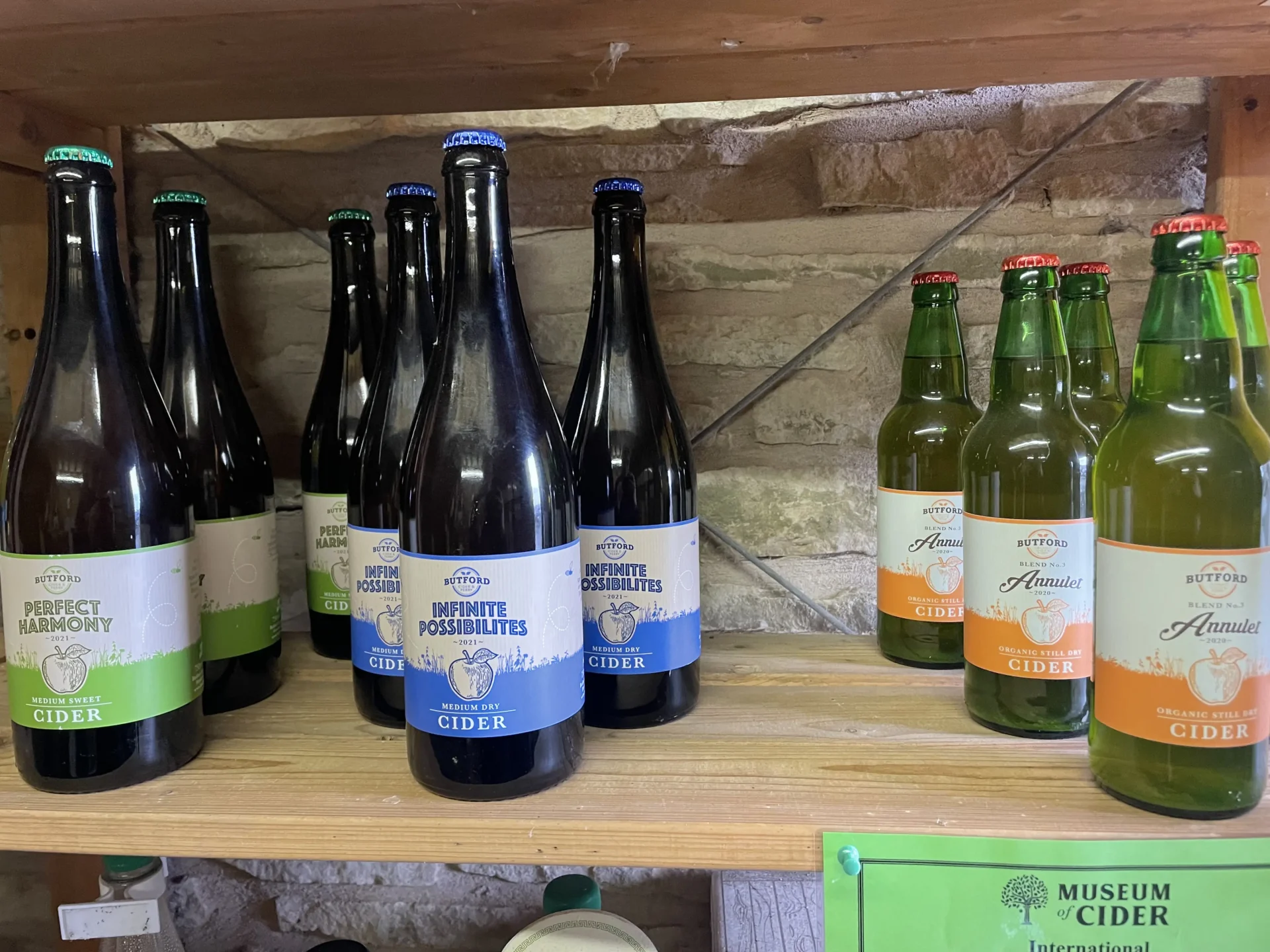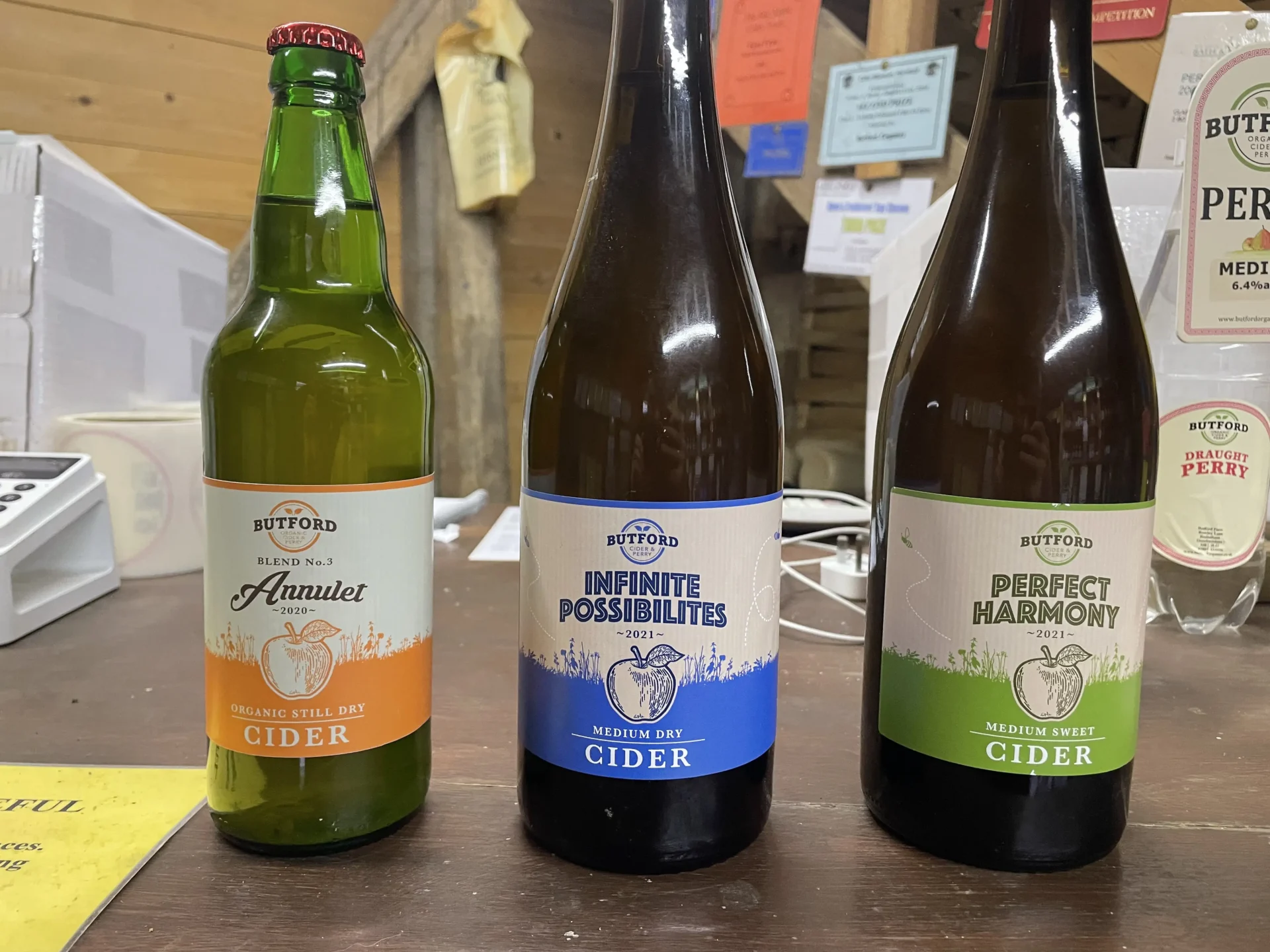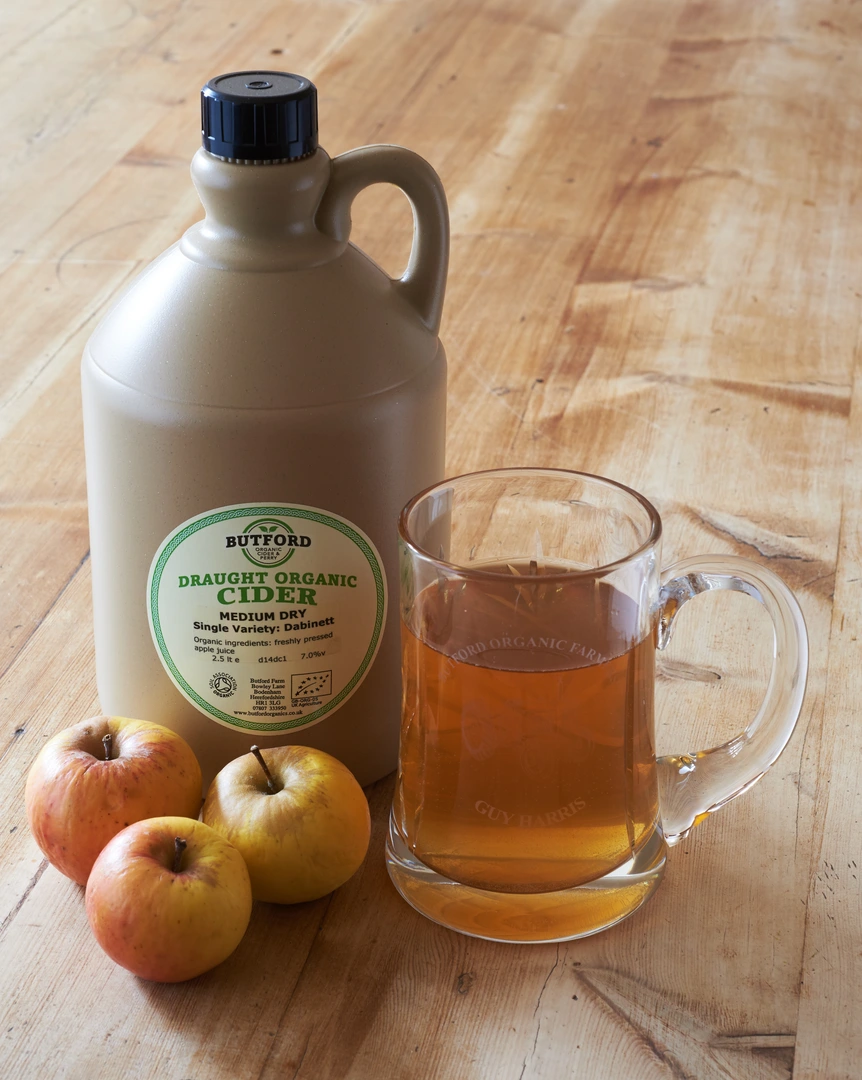Key Takeaways
- Dry cider is notable for its minimal sugar content, yielding a crisp, tart taste.
- Medium dry cider balances slight sweetness with traditional dryness.
- Medium cider blends noticeable sweetness with balanced flavours.
- Medium sweet cider is richer in sweetness, yet remains refreshing.
- Sweet cider is the most sugary, characterized by its robust, fruity profile.
What is Dry Cider?
Dry cider is distinguished by its low sugar presence and is renowned for its sharp taste. This cider type undergoes extensive fermentation, converting most apple sugars into alcohol. The outcome is a cider that is less sweet, more acidic, and typically contains an alcohol content ranging from 4-6%. Notably carbonated, dry ciders provide a crisp taste sensation, making them an ideal pairing with foods such as cheese, charcuterie, and even spicy dishes.
Notable dry cider brands, like Magners, Strongbow, Blackthorn, and Butford Organics Yarlington Mill, each bring distinct qualities to this category. The crafting of dry cider begins with the selection of apples – usually those high in acidity, contributing to the cider’s sharp flavour. The apples are harvested, washed, and crushed, releasing their juices. This juice then undergoes fermentation with yeast, which consumes most of the natural sugars.
Post-fermentation, any lingering sugars are quantified via a gravity reading. This measurement helps categorize a cider as “dry” if it falls below 0.9% residual sugar or has a final specific gravity of 1.002. These technical details aside, the essence of dry cider lies in its flavour profile – typically light-bodied, with crisp acidity and earthy notes reminiscent of white wine. Its aromas are complex, often revealing subtle fruity flavours like apple blossom and honeydew melon.
Exploring Medium Dry Cider
Medium dry cider offers a delightful middle ground in the cider spectrum. It is crafted using a blend of sweet and tart apples, undergoing a fermentation process that is shorter than that for dry cider. This results in a cider that is neither as sweet as its fully sweet counterparts nor as dry as the dry varieties. The sugar content in medium dry cider typically falls between 0.4-0.9% residual sugar, providing a hint of sweetness that doesn’t dominate the overall flavour.
The flavour profile of medium-dry cider is balanced and complex. It appeals to those seeking a cider experience that isn’t overly sweet or too dry. This type of cider showcases the nuanced characteristics of the apples used, often resulting in a beverage that offers a more approachable and moderate taste. It’s an excellent choice for those trying cider for the first time or for those who prefer a more mellow sweetness in their drink.
Popular brands in this category include Westons Old Rosie, Thatchers Gold, and Aspall Dry, among others. Each of these brands brings a unique interpretation to the medium dry category, offering consumers a range of options to suit their taste preferences.

Understanding Medium Cider
Medium cider occupies a unique position on the sweetness spectrum. This category is defined by a residual sugar content ranging from 0.9-2.0%, striking a balance between the dry and sweet varieties. Medium ciders offer a noticeable sweetness, yet maintain a level of complexity and depth that prevents them from being overly sweet.
The creation of medium cider involves a careful fermentation process where the sugar levels are monitored to achieve the desired sweetness. This type of cider often uses a combination of different apple varieties, each contributing to the final flavour profile. The result is a cider that exhibits a well-rounded character, where the sweetness is a notable component but not the sole defining feature.
Delving into Medium Sweet Cider
Medium sweet cider represents a sweeter niche in the cider spectrum, with residual sugar content typically ranging between 2.0-4.0%. This category caters to those who enjoy a noticeable sweetness in their cider, yet still appreciate a beverage that remains refreshing and not overly cloying.
The production of medium sweet cider often involves a delicate balance in the fermentation process, where fermentation is stopped at a point that retains a higher level of natural sugars from the apples. This results in a cider that is distinctly sweet but maintains enough acidity to create a balanced and enjoyable drinking experience.
Medium-sweet ciders are characterized by their rich, fruity flavours, which make them a popular choice among those who enjoy a sweeter drink. They are particularly appealing during warm weather or as a dessert cider, offering a luscious alternative to the drier varieties.
Popular brands of medium-sweet cider include such as Weston’s vintage medium sweet, Oldfields, and Perfect Harmony cider. This type of cider can also be an excellent component in mixed drinks, adding a sweet and fruity dimension to cocktails.
What is Sweet Cider?
Sweet cider is the most sugary variety within the cider spectrum, characterized by a residual sugar content above 4.0%. This type of cider is akin to a dessert wine in its sweetness, offering a rich, fruity flavour that is deeply satisfying for those with a penchant for sweeter beverages.
The production of sweet cider often involves using apples with naturally higher sugar content or adding sugar or other sweeteners to the apple juice before fermentation. This process results in a cider that is intensely sweet, yet should not be cloying. The key is to balance the high sugar content with adequate acidity to maintain a pleasant taste experience.
They are perfect for sipping on their own, especially as a refreshing drink on hot days or as an accompaniment to desserts. Their sweetness also makes them a popular base for cocktails, mixed drinks, and cider blends offering a delightful sweetness that can enhance a variety of flavours.
Popular brands of sweet cider, such as Woodchuck, Angry Orchard, and Crispin, have contributed to the growing popularity of this style. These brands offer a range of sweet cider options, each with its unique take on this indulgently sweet beverage.
For a full range of dry to sweet cider with examples of all of them and the apples they use click here.





